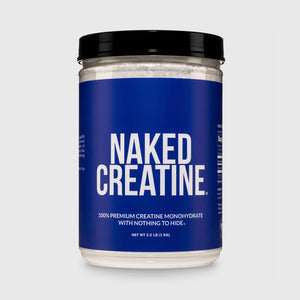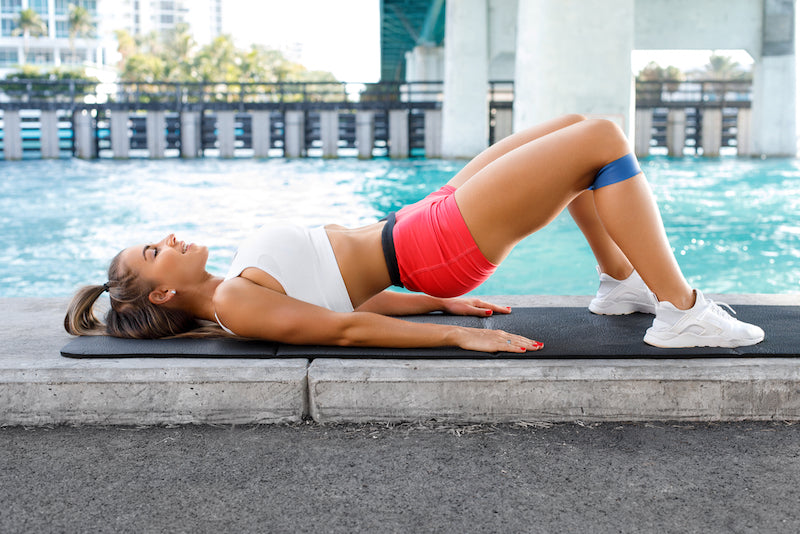Do your glutes feel uneven or imbalanced? You're not alone. Glute imbalances are a frequent occurrence and can lead to discomfort, poor posture, and even injuries.
In this comprehensive guide, we'll delve into the causes and effects of glute imbalance, provide methods to assess your glute strength and activation, and offer targeted exercises to strengthen uneven glutes.
Finally, we'll share tips on maintaining glute balance and preventing future imbalances. Say goodbye to uneven glutes and hello to a stronger, more balanced body!
Key Takeaways on Glute Imbalance
-
Understanding glute imbalance is important as it can lead to discomfort and injury due to several causes.
-
Addressing tight hip flexors, hamstring dominance and strengthening uneven glutes through targeted exercises are key for improving balance.
-
Consistency in training, incorporating functional movements into your routine, and listening to the body's signals are essential for maintaining glute balance.
Understanding Glute Imbalance: Causes and Effects
Glute imbalance is a common issue where one side of the gluteus maximus (or glute) muscle is stronger or more active than the other. In fact, it's a frequent occurrence and part of the typical human anatomy. But why is addressing glute imbalance so important?
If left unattended, this imbalance can lead to discomfort, uneven appearance and even injuries.
Several factors can contribute to glute imbalance, such as inactivity, lifestyle factors, injuries, pain, and anatomical variations. Signs of glute imbalance may include tightness in the hip on the weaker side of the gluteus maximus, hamstring dominance on the weak glute side, variations in muscle activation during exercises, uneven muscle soreness after a workout, and one side of the glute appearing larger than the other.

Indications of weak glutes may include low back pain, pain in the pelvic area, fatigue after standing for short periods of time, and difficulty with stairs.
Glute imbalance can lead to pain not only in the limb affected but also in its opposite side, and over the entire kinetic chain. This has been observed repeatedly.
Having uneven glute muscles can lead to biomechanical overload and an increased pressure on different joints. Potential knee injuries may include ACL and other ligament damage. Hamstring strains, ankle sprains, lower back pain, and femoral acetabular impingement syndrome are also common athletic injuries.
The solution to glute imbalance is generally consistent regardless of the underlying cause. It is essential to have a realistic outlook when undergoing the re-education process. Given that a gluteal imbalance may have been present for an extended period of time, it is likely that a considerable amount of time will be required to re-establish the motor circuitry.
Here's a short rundown on the common causes of a glute imbalance.
Inactivity and Lifestyle Factors

A sedentary lifestyle and lack of physical activity can result in weak glutes, which can then cause a muscle imbalance. This can have detrimental effects, such as poor posture, pain, and difficulty in performing certain activities.
Injuries and Pain
Injuries such as knee injuries, ankle injuries, shoulder injuries, lower back injuries, or trauma from slips and falls can contribute to glute imbalance. Previous injuries can impede the activation of the gluteal muscles, and without appropriate rehabilitation, this can result in asymmetrical strength and hypertrophy.
For example, if an individual is right-handed, they may tend to jump off their left leg, causing the left hip extensor to be stronger than the right and the right hip flexor to be stronger than the left. The strength of the glutes is critical in avoiding injuries associated with the glutes' weak points.
Moreover, previous injuries may result in the formation of scar tissue, causing tightness and decreased strength in the glutes, leading to an imbalance in the body, posture issues and discomfort.
Anatomical Variations
Anatomical variations, such as asymmetry of the human anatomy, leg length discrepancy, and discrepancies in hip structure, may be responsible for glute imbalance. Asymmetry in human anatomy can create muscular strength discrepancies between sides of the body, resulting in an imbalance in the glutes.
Leg length discrepancy can cause an imbalance in the glutes due to one side of the body becoming stronger than the other. Hip differences can lead to a strength discrepancy between the two sides of the body, which can then manifest as an imbalance in the glutes.
Basic asymmetrical human anatomy can also contribute to glute imbalance. It is possible that one side of the body may be stronger than the other, potentially resulting in an imbalance in the body.
Assessing Your Glute Strength and Activation
Evaluating your glute strength and activation is essential to recognize any disparities, prevent injuries, and enhance performance. To assess your glute strength and activation, you can perform the chair test, single-leg squat test, and glute activation test.
Each of these exercises are designed to show the functional ability of one side of your glute, along with surrounding muscle groups and stabilizer muscles.
By performing these tests and exercises, you can better understand your current glute strength and activation and take the necessary steps to address any imbalances.
Addressing Tight Hip Flexors and Hamstring Dominance

Releasing and stretching tight hip flexors and hamstring dominance is essential to enhance hip extension and glute activation. Addressing these issues can help alleviate discomfort and improve overall mobility. To increase hip extension range on the affected side, it's important to focus on stretches and exercises that relieve tension on that side.
Releasing and stretching exercises may be beneficial in addressing tight hip flexors and hamstring dominance. These exercises can help improve flexibility, reduce discomfort, and enhance overall performance.
Releasing Tight Hip Flexors
Hip flexor stretches, foam roller stretches, kneeling hip flexor stretches, and single-leg exercises such as step-ups and single-leg toe touches are some exercises that can be utilized to reduce tight hips. It is advised to hold the stretch for a duration of 15 to 30 seconds and repeat the process 2 to 4 times.
Maintaining consistency when releasing tight hip flexors is crucial as it helps to guarantee that the muscles are adequately stretched and relaxed, thus leading to a decrease in pain and an increase in mobility.
Overcoming Hamstring Dominance

To reduce hamstring dominance, exercises targeting the glutes and hip muscles, such as deadlifts, Romanian deadlifts, single-leg Romanian deadlifts, sumo squats, back extensions, and kettlebell swings, may prove beneficial. To ensure proper form, it is important to maintain a neutral spine position and engage the core muscles. Additionally, it is essential to keep the glutes engaged and the tension in the muscles constant throughout the entire range of motion.
Consistency in training is essential for muscle regularity and body adaptation to exercises, thus preventing potential imbalances and enabling muscles to work in unison. By addressing hamstring dominance and tight hip flexors, you can help improve your overall glute balance and performance.
Targeted Exercises for Strengthening Uneven Glutes
Targeted single-leg exercises can be highly effective in strengthening uneven glutes, reducing glute dysfunction and improving overall glute balance. By focusing on specific exercises that help target the weaker glute, you can work towards a more balanced and stronger lower body. Some of these targeted exercises include single-leg glute bridges, unilateral squats and lunges, and additional glute activation exercises.
For those who are unable to make the necessary adjustments independently or are uncertain about how to start, seeking assistance from a personal trainer or physical therapist may be helpful. They can guide you through the proper form and technique for these exercises, ensuring that you are effectively targeting the right muscles and working towards a stronger, more balanced body.
Single-Leg Glute Bridges
Single-leg glute bridges are an effective exercise for strengthening the glutes. To execute them, start by lying on your back with your palms face-down by your side. Extend one leg, then squeeze your glutes and push your hips up until your shoulders and knees are in a straight line. Lift the other leg until the lower leg is parallel to the floor, then lower your hips, repeat, and switch legs.
The purpose of glute bridges is to strengthen the gluteal muscles, and there are several progressions that can be used to increase the difficulty of the exercise. Adding a dumbbell over the hips for added weight or performing the exercise on one side at a time with one leg lifted can help further challenge and strengthen the glutes.
Unilateral Squats and Lunges
Unilateral squats and lunges involve performing a single-leg squat or lunge on one side of the body. These exercises can help target and strengthen the weaker glute, improving overall glute balance. To execute a side lunge, stand with your feet hip-width apart and extend one foot outward. Bend your knee and lower into a lunge position, ensuring your knee is at a 90-degree angle.
Split squats are another effective exercise for targeting the glutes. To perform split squats, rest one foot on a bench or stability ball and lunge the opposite foot forward. Once in the lunge position, it is essential to maintain the front knee bent at 90 degrees. This helps ensure proper form and movement.
Additional Glute Activation Exercises
Supplemental glute activation exercises can further strengthen the gluteal muscles and enhance gluteal equilibrium. Some of these exercises include the single-leg deadlift, which targets the gluteus medius, the clamshell exercise for isolated gluteus medius strengthening, and lateral band walks for engaging the gluteus medius.
The Side Plank Abduction exercise focuses on the glutes, hip abductors, and abdominals. By incorporating these additional exercises into your routine, you can strengthen your glutes and work towards better glute balance and overall performance.
Maintaining Glute Balance and Preventing Future Imbalances
To ensure that glute balance is maintained and any future imbalances are avoided, it is important to be consistent with training, include functional movements in the routine, and pay attention to the body's signals. By focusing on these strategies, you can maintain glute balance and prevent potential issues in the future.
These strategies help you work towards a stronger, more balanced lower body, and enjoy improved performance and overall health.
Consistency in Training
Consistent training habits helps reduce the risk of injury, enabling the body to adapt and improve with time, and establishing momentum and habits that result in long-term change. Achieving consistency in training requires setting realistic goals, establishing a practical schedule, and finding ways to stay motivated.
Consistency in training can result in enhanced performance, augmented strength and endurance, and improved overall health. By committing to regular training, you can ensure that your glutes remain balanced and strong, making it less likely for imbalances and related issues to occur.
Incorporating Functional Movements

Incorporating functional movements can enhance overall strength, stability, and mobility, facilitating everyday movements and decreasing the risk of injury. Examples of functional movements include squats, lunges, single-leg glute bridges, and unilateral squats.
Functional movements generally evenly engage the glutes, which can help to avoid the development of muscular imbalances. By incorporating functional movements into your routine, you can further ensure that your glutes remain balanced and strong.
Listening to Your Body
Attending to one's body can assist in avoiding injuries, enhancing physical performance, and recognizing when rest or recovery is necessary. Taking time to assess your physical and emotional state can provide valuable insight into how your body is feeling and what it needs.
By being mindful of physical sensations, such as soreness, stiffness, or exhaustion, and emotional states, you can make informed decisions about your training and overall well-being. Listening to your body is a vital skill to possess in order to reach optimal health and wellness and maintain a balanced, strong lower body.
Summary
In conclusion, understanding and addressing glute imbalance is crucial for overall health, performance, and injury prevention.
By assessing your glute strength and activation, addressing tight hip flexors and hamstring dominance, and incorporating targeted exercises for strengthening uneven glutes, you can work towards a more balanced and stronger lower body. Remember to maintain consistency in training, incorporate functional movements into your routine, and listen to your body's signals to ensure glute balance and prevent future imbalances.
With dedication and persistence, you can conquer glute imbalance and enjoy improved performance, mobility, and overall well-being.
Frequently Asked Questions

How Do You Fix Unbalanced Glutes?
Exercising your weaker glute with low-load dynamic drills is an effective way to help fix unbalanced glutes. Try 2 sets of 10-20 reps of side lying abductions, clams, hip extensions, and single leg glute bridges with the weaker leg.
With dedication and effort, you can make your glutes balanced in no time.
How Do I Know if I Have Glute Imbalance?
Unilateral exercises such as hip extensions, single-leg glute bridges and clamshells can provide insight into any imbalances. Paying attention to how your glutes respond during exercise is essential for avoiding injury and optimal performance.
What Causes a Glute Imbalance?
Unequal development of the glutes due to asymmetrical human anatomy, inactivity and past injuries can cause a glute imbalance. This can be compounded by favouring one leg over another in your movement patterns, differences in leg lengths or hip differences.
Taking these into account is key to correcting any potential glute imbalance.
What are the Effects of Glute Imbalance?
The effects of glute imbalance can be far-reaching, causing pain throughout the body as well as affecting mobility and posture. Glute imbalances can lead to discomfort in the affected limb and even the opposite side.
It is important to address any imbalances that may occur in order to prevent long-term damage.
How do I Fix Glute Imbalance?
To fix glute imbalance, focus on strengthening the weaker glute with low-load dynamic drills, such as side lying abductions, clams, quadruped hip extensions and single leg glute bridges.
Additionally, engage the glutes with exercises such as glute bridges, split squats and glute kickbacks.













